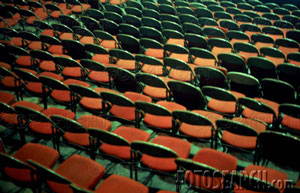
Does the learning environment have any impact on what happens in a class, on revolutionary Sunday School? Does it impact life-changing learning? Does it impact connecting relationships? Does it impact assimilation, sticking power?
In my experience, the physical environment does make a difference. I know women who cannot attend class because of cold temperatures; senior adults who cannot attend because of the lack chairs with arms (to push out of in order to stand up); and children who cannot attend because the church does not have ramps, elevators, and handicapped accessible bathrooms. How can Sunday School be revolutionary if people are unable to participate because of the learning environment?
The social environment is another aspect of the learning environment which impacts Sunday School. Since so much communication is nonverbal (93%), how can relationships with classmates be enhanced when the teacher lectures to rows of attenders? Yes, teachers and attenders can connect relationally, but how do you connect with backs of heads–attenders with attenders? When there are two or fewer friends in class, people tend to drop out. Also, since hearing alone has a low 20% rate of learning retention, lecture/rows can also potentially produce less learning and life-change.
In my experience, 999 out of 1000 who drop out of church cease to grow and serve as His disciples. How can we avoid these learning environment stumbling blocks? What other ways have you seen the physical and social environment impact what happens in the class? What do we need to do to the learning environment in Sunday School to make what happens even more revolutionary? Make disciples. Be revolutionary!
Leave a Reply